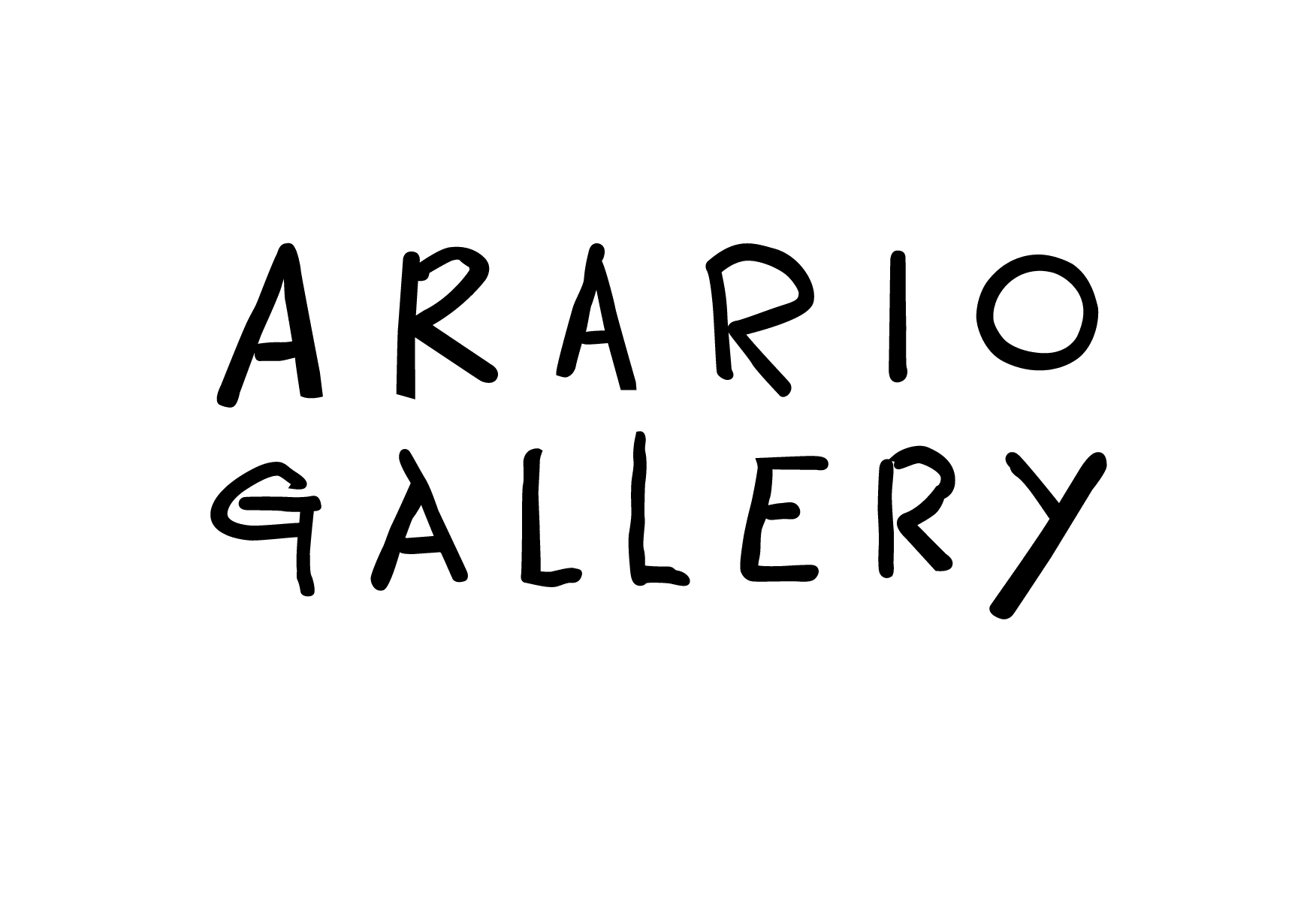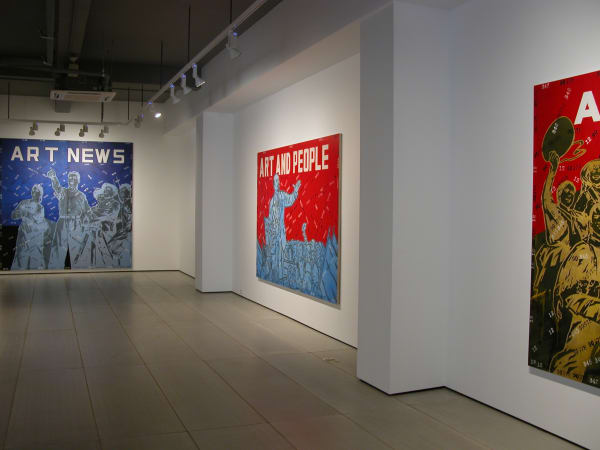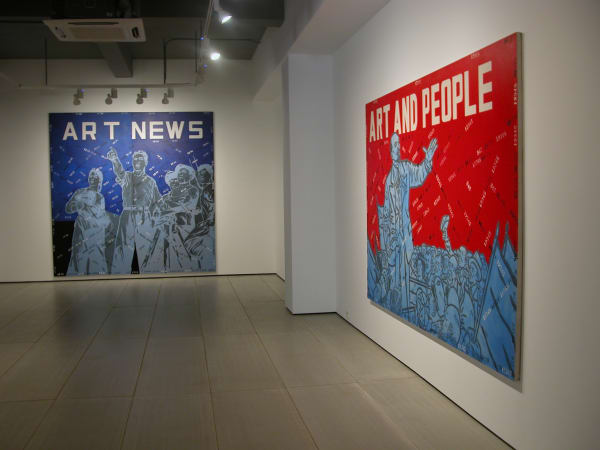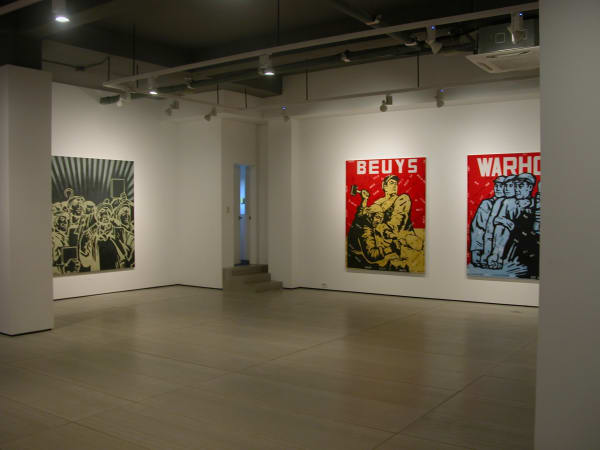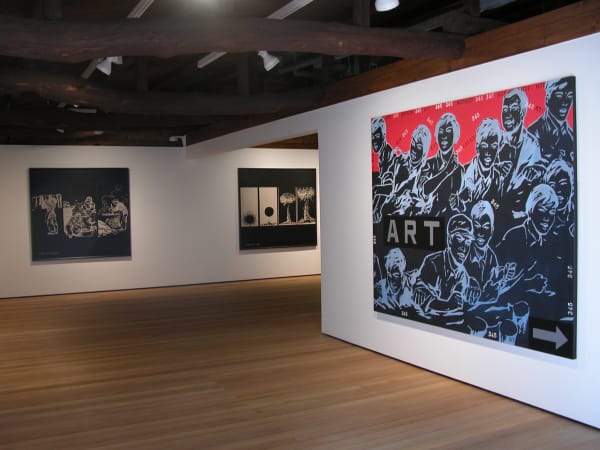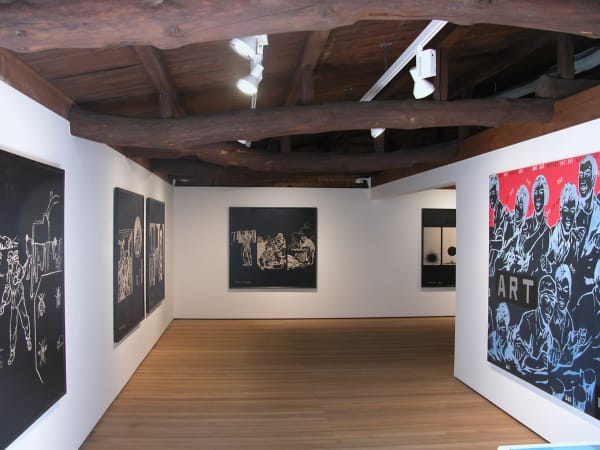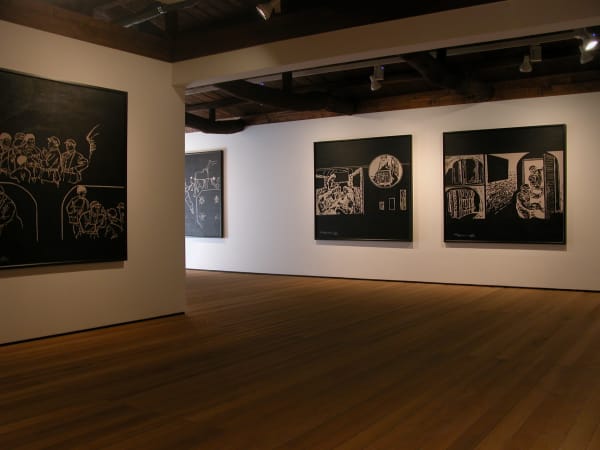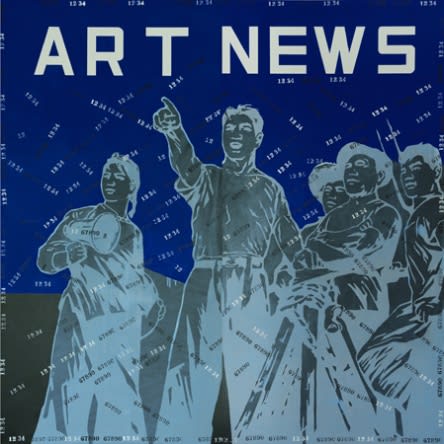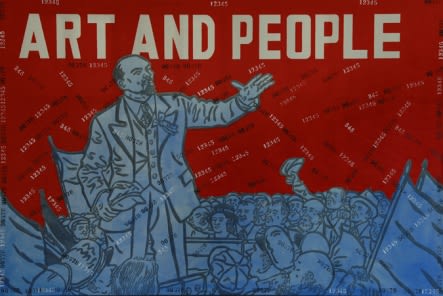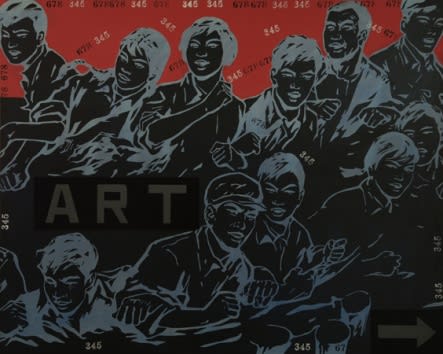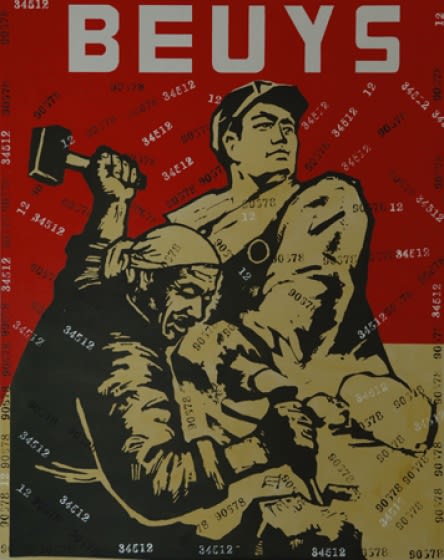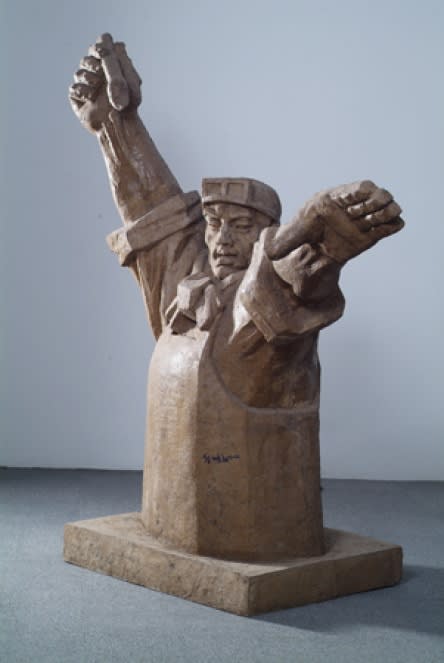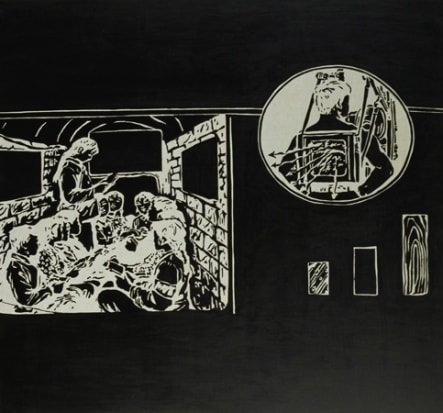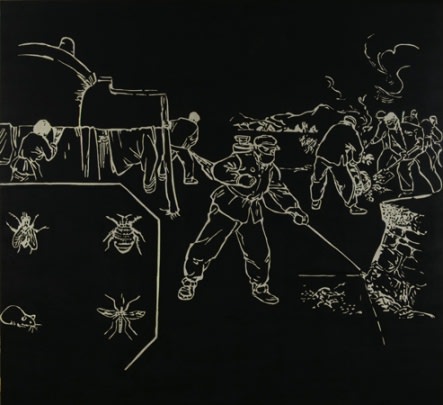WANG Guangyi
Wang Guangyi: An Intensive Portraiture of Modernity
We have, over the past 15 years, witnessed the emergence of several new political, economical, and cultural centers around the world, the establishment of a manifold cultural landscape as well as the birth of the new ‘city’ in the global world. In fact, Western-centered values which have, over the past 200 years, had a mainstay over and across the whole world since the 1789 French Revolution, have for the first time, been placed in a completely different environment and social conditions. In that sense, 1989 could be seen as a very important, watershed year, in which changes toward globalism and a significant shift in paradigms took place across the world. The reunification of East and West Germany, the disintegration of the Soviet Union, the Tiananmen Square protests, all of which took place in 1989, led to the demise of socialism and the global spread of capitalism, not to mention the invention of the internet which has completely transformed mankind’s conception of memory and space. If the 1789 French Revolution was the watershed event of Western modernism as we know it, foreshadowing imperialism and the industrial revolutions, 1989 was the beginning of the globalization of capitalism and the birth of the imagined space of the internet!
So what did the shift in paradigms look like afterward? Solemnly holding onto all the pains and glories of the past Century, what kind of a future are we headed for?
Wang Guangyi is an artist who is a faithful embodiment of all the pains and glories the 20th Century endured and celebrated, especially in the conflicts and coexistence of socialism and capitalism. Having spent his teenage years in the insane midst of the Cultural Revolution, Mr. Wang was accused of leaking intelligence, and spent four years imprisoned in a facility for ideological rehabilitation. When he turned 20, he was appointed a job as a railroad worker by the Chinese government. Furthermore, his works are faithful embodiments of the history of Chinese contemporary art. In 1980, by the time most of the turmoil of the Cultural Revolution had settled, he turned 24 and enrolled himself in the Chul-Kang Art Institute (the present-day China Art Institute) in Hangjhou where he began his career, in which he was continually placed at the forefront of Chinese avant-garde art. At times he was an artist, but at other times, he was also a producer or a critic. He was constantly changing in his life as well as career, but he was always firmly grounded at the same time. The ‘Northern Artists Group’ which he headed up, not only marked the onset of Chinese contemporary art, but was also the parent body of the ’85 New Artists’ movement which spread across all of China. The term ‘Political Pop’, which is now considered one of the two main tendencies of the Chinese avant-garde, was first used to define Wang Guangyi’s ‘Grand Criticism’ series which he began in the early 1990s. It is no wonder that critics never resist calling him the godfather of Chinese contemporary art.
The rapid revolutionary opening of China’s doors as well as the sudden shift to capitalism in the political economy has provided, not only to Wang Guangyi, but to all of Chinese contemporary art, a new environment as well as opportunity. As Saskia Sassen has stated, the globalized cities of the post-1989 era are locations in which the political, economic and cultural powers are at once powerfully aligned. Indeed it was through the globalization of capitalism that allowed China to establish itself as a powerful capitalistic nation and that the globalized city of Beijing, symbolizing such a shift, had emerged. Moreover, the Chinese avant-garde had emerged as a main power in the global art world through the Venice Biennial and the Australian Triennial of 1993.
Through such sociopolitical changes, the city of Beijing, which had been overshadowed over the years, was reborn as a ‘global city’. With the shift in the global artistic order, the Chinese avant-garde rose as a main power in the international art scene a force to contend with. Moreover, amongst the Chinese avant-garde artists, Wang Guangyi’s works are particularly closely related to the specifics of the Chinese situation, where capitalism and socialism coexist, as well as to the paradigmatic shift on the level of the international stage. In Wang Guangyi’s life as well as career, we see the very coexistence of the pains and glories of socialism and capitalism. This is why I have called his works ‘an intensive portraiture of modernity’. Indeed the focus of his works is to conduct a grand criticism of all the various social formations and ideologies that were used in experimentation throughout this past Century. This is why his works are not only appealing in China, but is recognizable as a common language throughout the world in these global cities. In some ways, Wang Guangyi has, without any relation to his works, already become an idol of capital and the masses. However, I do think that before one decides to formally categorize an artist’s works, iconographically analyzes the work, or prices the work, one needs to recognize and appreciate the desperation of the artist’s life as well as his intense self-critique. Over the last 10 years, he was my life’s mentor as well as colleague, and we have spent quite a lot of time together. This little blurb as well as catalogue is a token of the memories that we have shared as well as a small dedication to his life and work.
Yoon Jae-Kap
Director, Arario
